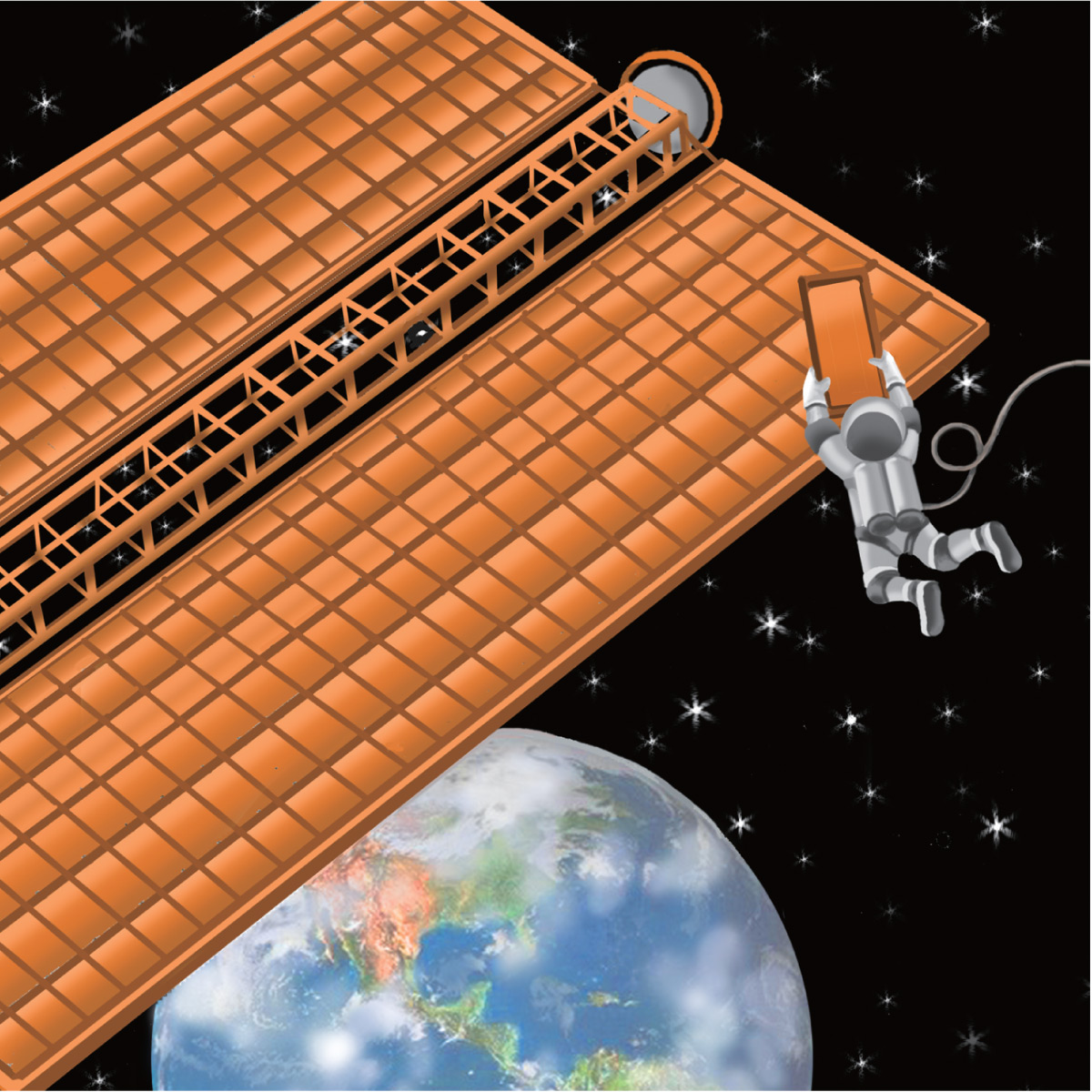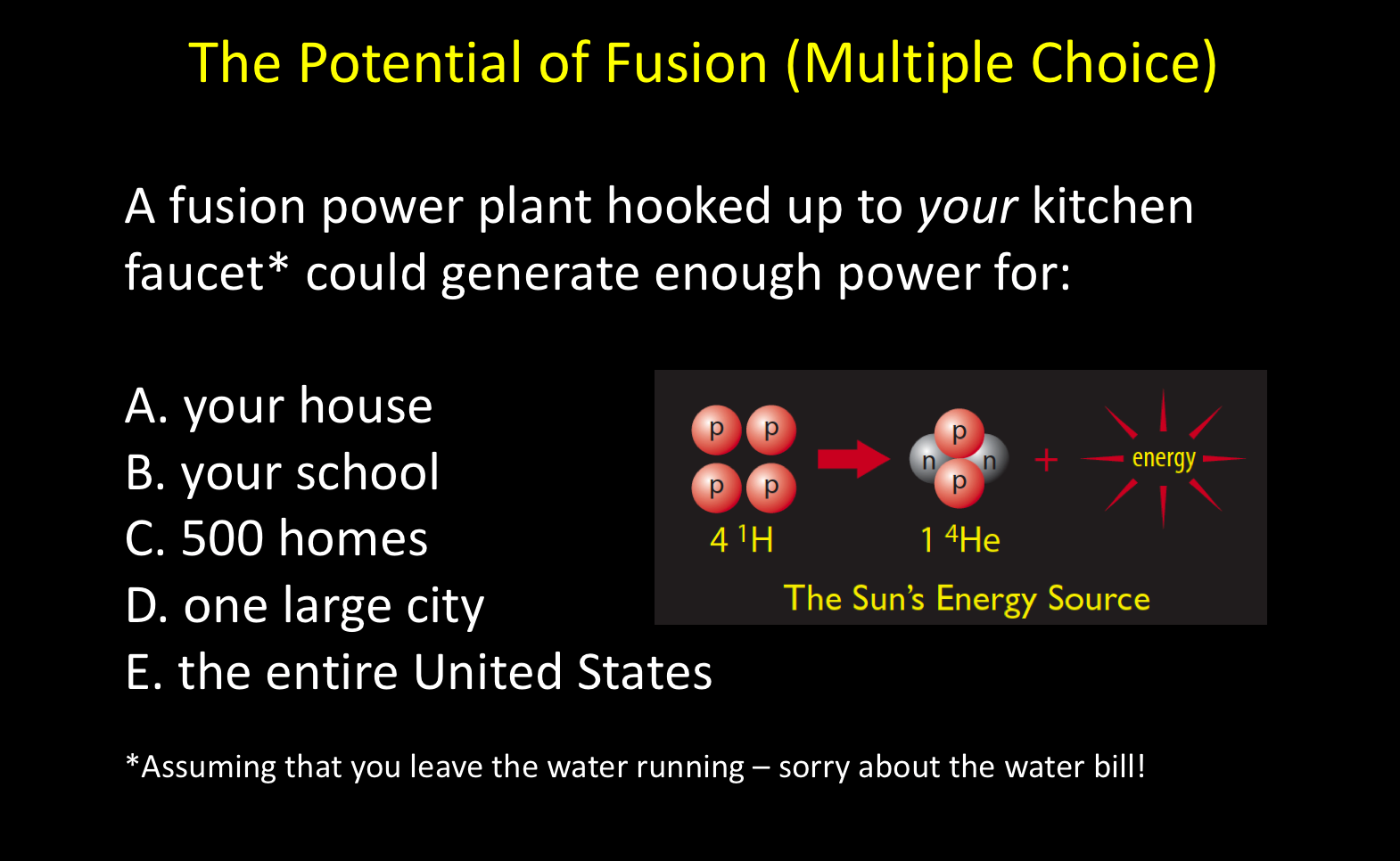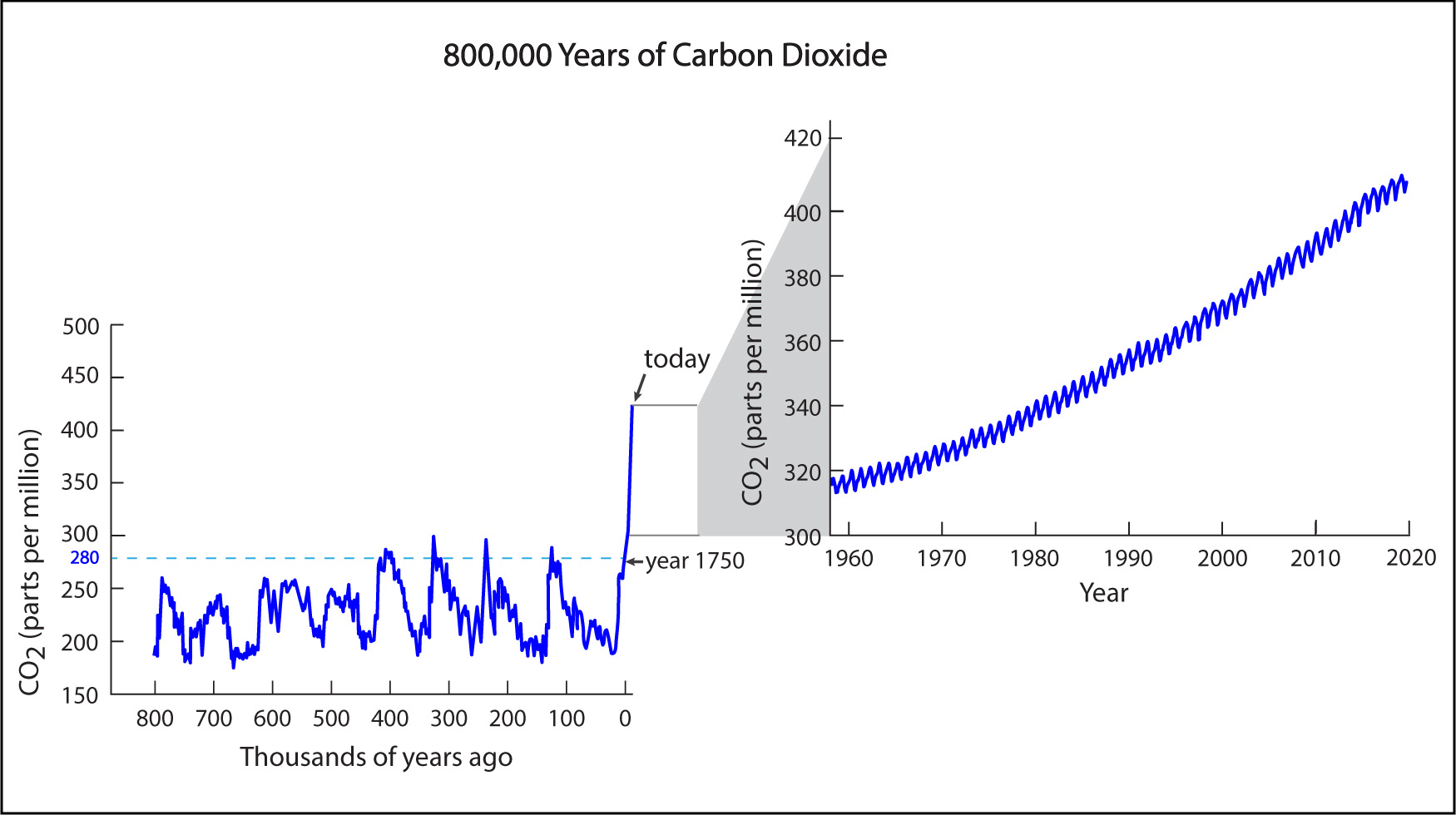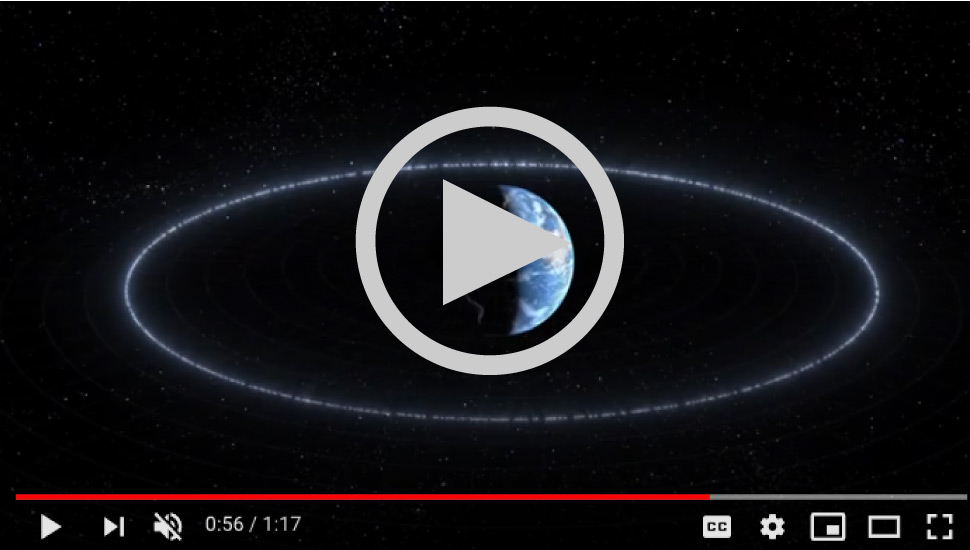In addition to the existing technologies that we discussed in the prior section, researchers and entrepreneurs around the world are investigating many other technologies that could in principle provide us many more ways to address the problems of global warming. Some of these are “modest” extensions of existing technologies that are very likely to happen within the next couple of decades. For example:
- Offshore wind technology is rapidly advancing, so in the future we will likely be able to make much more use of offshore wind.
- Solar photovoltaic technology is also rapidly advancing, which should allow us to make solar panels that will convert a higher percentage of the sunlight they receive into electricity.
- Huge advancements are also occurring in the technology for tidal power, which could make it a substantial source of energy in the future.
- Battery and other energy storage technologies are rapidly advancing, which will make it much easier to make use of renewable energy sources.
But remember that we want you think long term, out toward the year 2100 and beyond. For that, it is worth thinking about some technologies that are only beginning to be developed today, but that have tremendous potential for the future. In the rest of this section, we’ll briefly discuss four of these technologies: microbe-based biofuels, solar energy from space, nuclear fusion, and active removal of carbon dioxide.
Algae-based Biofuels
We’ve already discussed existing biofuels (such as those made from corn, sugar cane, sorghum, and soybeans). Recall that while these biofuels can in principle replace some of our fossil fuel usage, they also have some notable drawbacks. In particular, the way they have been grown to date has not been truly carbon neutral, and they use land and water that could otherwise be used for food production.
Future biofuels may be much better. In particular, many researchers are working to develop biofuels made from microbes such as algae. Algae are rich in natural oils that, in principle, can be “refined” into fuels that could directly replace petroleum-based fossil fuels. Moreover, algae can much more easily be grown in a truly carbon neutral way, in which they absorb just as much carbon dioxide during growth as they release later when burned. In fact, it may even be possible to produce algae-based biofuels in a way that is carbon negative, meaning that some of the carbon dioxide the algae absorb during growth is converted into a form (sometimes called “hydrochar”) that can be used or buried in a way that does not return this carbon dioxide to the atmosphere. If so, then these biofuels might help us eventually begin to lower the carbon dioxide concentration from its current high levels.
A further advantage of algae-based fuels is that they can be grown almost anywhere — perhaps even in floating, enclosed “ponds” in the ocean — and they can be grown with seawater or wastewater. This means that, unlike existing biofuels, they should not have any negative consequences for the availability of food or fresh water.
Unfortunately, despite these attractive features of algae-based biofuels, they’ve also proven to be technologically challenging to produce. More than a decade ago, numerous new companies were working to produce algae-based biofuels, and these fuels were successfully tested in cars, airplanes, and ships. However, none of these companies were able to scale up the production to a level that was commercially viable, and most of them have either gone out of business or have changed their product focus.
Nevertheless, algae-based biofuels still hold promise. and they may yet prove to be an important future technology for fossil fuel replacement. Video 7.3.2–1 describes some ongoing research in the development of these fuels.
Video
Video 7.3.2–1 – This video shows students and researchers at the University of Michigan working on ways to develop commercially viable algae-based biofuels. Credit: University of Michigan.
Activity
The Third-Generation Biofuel Business
Recall from Video 7.3.1-12 that most existing biofuels are “first-generation” biofuels made from crops that could otherwise be used for food, while “second-generation” biofuels are made from plants (or parts of crops) that cannot be used as food but still require land and water resources. Algae-based biofuels take this a step further, and hence are often called “third generation” biofuels.
- Based on what you have learned in this section, make a brief list of the advantages that algae-based biofuels could have over first-and second-generation biofuels.
- Recall that one strategy for making use of existing carbon-free energy sources (such as wind, solar, and nuclear) is to “electrify everything.” What types of “things” are most difficult to electrify, and how would biofuels be useful to them?
- Do a web search on “algae biofuel” or “third-generation biofuel” and look for companies that have sought to develop these fuels. Choose one such company, and write a one-page summary of the company’s history with this biofuel. Be sure to state when the company started work on this biofuel, the goals they set out to meet, how much money they have spent on development, and whether their work is still continuing. If the company is still working on the biofuel product, then discuss their progress to date in meeting their goals. If they are no longer working on it, briefly describe why not.
This activity gives students a chance to make sure they understand the potential benefits of algae-based biofuels (in questions 1 and 2) and also gives them a chance to investigate why the business of developing these fuels has proven so challenging (question 3). Notes:
- (1) The advantages are those described in the text: they can be truly carbon neutral, and perhaps even carbon negative; they have no impact on food or fresh water supplies; they can be grown almost anywhere, perhaps even on the ocean, where they wouldn’t have land impact either.
- (2) The most difficult things to electrify are in the transportation sector. Electrifying boats and airplanes is particularly difficult, so many people think that algae-based biofuels offer our best hope of being able to make boats and airplanes carbon neutral. Land transportation —cars, buses, and trains — is less difficult to electrify since electric vehicles can be charged from the existing grid. However, replacing all existing internal combustion engines with electric engines is likely to take a long time, so in the meantime, biofuels could potentially allow us to keep using these vehicles without contributing to global warming.
- (3) The web search should return the names of dozens of companies that have focused on third-generation biofuels. Most of them have stopped work on their projects (especially those that got started in the boom period before about 2012), but a few are still at work. Either way, almost any of these companies should provide a great case study in the challenges of algae-based biofuel development. Students may need your guidance to find identify the best sources for learning about a particular company without getting too in-depth; that is, just enough depth to prepare the one page summary.
Solar Energy from Space
As we’ve discussed, one of the major drawbacks to solar energy on Earth is the fact that it is intermittent, working only in the daytime when it is not cloudy. But it’s never cloudy in space, and if you put solar panels in a high enough orbit, it is never nighttime either. So another idea for solving our energy and global warming problems is to launch solar panels into high Earth orbit (Figure/Video 7.3.2–2), where they would absorb sunlight and beam the energy down to collecting stations on Earth. Recall that the power of sunlight shining on Earth is more than 20,000 times current world power usage, and there is even more power available from high orbits. Therefore, solar energy from space could easily meet almost any future energy need that we can imagine.

Figure/video 7.3.2–2 – The amount of solar energy available in Earth orbit is tens of thousands of times as much we need on Earth today. Therefore, if we could harness solar energy from space, it could in principle meet all our future energy needs even as we vastly raise living standards for people around the world.
It would obviously be expensive to launch solar panels into space, but perhaps not as expensive as you might guess. The “panels” for use in space might well be no thicker than a thin film of plastic wrap, so enormous panels could potentially be unfurled from lightweight spools that could be launched by existing rockets. Moreover, these panels would not degrade in space the way they would on Earth, so once launched into orbit, they would likely provide energy for decades (or more) without the need for replacement. Overall, the total launch costs for enough panels to meet all global energy needs for decades might well be less than we spend (globally) on energy in a single year at present.
The greater challenges to using solar energy from space probably lie in the technology for transmitting the energy to Earth, in building the collecting stations for that energy, and in tying those stations into a power grid that could distribute the energy around the world. But none of these challenges appear to be insurmountable, and proponents of solar energy from space argue that we could start implementing it now if we were willing to make a concerted effort on it. Indeed, in 2020, the U.S. Naval Research Laboratory launched the first test of a device for beaming solar energy from space down to Earth (click here for a short video about this mission).
Activity
Teaching about Solar Energy from Space
Despite its enormous potential, very few people have ever heard about the possibility of obtaining solar energy from space. This activity is your opportunity to help change that. Based on what you’ve learned here and with further research as needed, come up with a creative presentation that you could use to educate friends of families about both the potential benefits and challenges of solar energy from space. You can choose any format you wish: writing a report, doing a slide show, creating a video, or more. Note: A good way to learn more is to start with this website, or to do a web search on “space-based solar power.”
This activity will help students absorb the concept of solar energy from space by placing them in the role of teachers, since it asks them to teach friends or families about this rarely discussed possible energy source. As usual, encourage creativity from students as they make their presentations, and encourage them to actually use their presentations with friends and families.
Nuclear Fusion
Recall that all current nuclear power plants are based on nuclear fission, in which atoms of heavy elements such as uranium are split apart. But what if we could instead tap nuclear fusion , which is the power source of the Sun and other stars? In other words, imagine that we could in essence create power plants that would act like miniature suns, fusing hydrogen to make helium.
Let’s assume for a moment that we could do fusion the same way that the Sun does, using ordinary hydrogen. In that case, we could simply extract the hydrogen fuel from any source of water (since water is H2O). For example, if we had a miniature fusion power plant hooked up to your kitchen sink faucet, we could in principle extract hydrogen from the water flowing through it. So to get a sense of the potential of fusion as a power source, take a guess at how much power we could in principle generate simply by using the hydrogen extracted from the water from your kitchen faucet. That is, before continuing on, try the multiple choice question in Figure 7.3.2–3.

Discussion/Vote
Nuclear Fusion Potential
Take a class vote on the answer to the question in Figure 7.3.2–3. What is the most popular choice?
This vote is included just to give a brief pause to see what students guess before you continue on. Of course, if they’ve read ahead, they’ll already know the answer. But if not, past experience in doing this question with middle school students suggests that very few will choose the correct answer.
To most people’s surprise, the correct answer to the question in Figure 7.3.2–3 is E (as shown in the Do the Math box below). Think about this fact. If we had the technological capability for fusion and you were willing to let us use leave the water running at your kitchen faucet, then we could stop drilling for oil, stop digging for coal, dismantle all the dams on our rivers, take down all the wind turbines, and even turn off all the currently operating nuclear power plants. We’d be able to supply all the energy needed for an entire country like the United States through the fusion of hydrogen extracted from the water flow of a single kitchen faucet.
In reality, we will probably do fusion slightly differently than the way it occurs in the Sun. Instead of fusing ordinary hydrogen, as the Sun does, future fusion power will probably start with the form (isotope) of hydrogen called deuterium . However, deuterium can also be extracted from ordinary water, because about 1 out of every 6,400 hydrogen atoms is actually a deuterium atom. Therefore, instead of the water flow of a single kitchen faucet, you’d need the flow of 6,400 faucets to get the same answer to the question in Figure 7.3.2–3. This still isn’t much water, as it is only about the flow of a typical small creek.
The tremendous power potential of fusion is only the beginning of its advantages. For example:
- The final product of nuclear fusion is helium, which is not only safe and nontoxic, but actually quite useful. This means that fusion is not only a carbon-free power source, but it produces no other pollutants at all.
- The fact that we can get all the hydrogen or deuterium fuel we need from a small amount of water means there is no mining needed for fusion, which means it does not have any of the downsides even of even wind or solar energy.
- Fusion produces very little radioactive waste compared to fission , and the waste decays more rapidly, so it poses less of a challenge for safely burying away.
- Fusion power is completely safe, because it is physically impossible for a nuclear fusion plant to go out of control and have a meltdown.
- Fusion power plants would not be prone to any of the other concerns we discussed for existing nuclear fission power either. For example, because the fuel and byproducts are simply hydrogen (or deuterium) and helium, they would be worthless to terrorists or bomb makers.
Overall, fusion is almost undoubtedly the safest, cleanest, and most abundant energy source that we could potentially make use of. Moreover, because the fuel can be extracted from water, the operating costs of a nuclear fusion power plant would be very low. Therefore, if we could build nuclear fusion power plants cheaply enough, fusion would provide us with a virtually unlimited and almost free source of energy.
Given such incredible potential, you might wonder what’s stopping us, and the answer is simple: Despite decades of effort, no has yet figured out how to tap nuclear fusion for commercial power. However, a lot of progress is being made. One particularly promising project is the International Thermonuclear Experimental Reactor, or ITER, which is currently under construction in France with the goal of demonstrating commercially viable nuclear fusion within about a decade. Numerous other research teams around the world, including many at universities and even private companies, are working to try to develop fusion power. Watch the following three, short videos to get a little deeper understanding of fusion and the work currently being done to develop it as a future energy source.
(a) This very short video provides a brief introduction to fusion power and its benefits. Credit: Fusion for Energy.
(b) This video goes int a little more detail about the benefits and challenges of developing commercial nuclear fusion power. Credit: Science Museum.
(c) This video focuses on ITER and its construction. Credit: Fusion for Energy.
Videos 7.3.2–4 – You can find many videos and documentaries about nuclear fusion, but we’ve chosen these three to give you a short (about 10 minutes total) overview of fusion and the ITER project.
Discussion/Vote
A Fusion Future?
After scientists and engineers successfully built the first nuclear fission power plants in the 1950s, many of them assumed that it would be relatively “easy” to move on to fusion. However, fusion power has proven much more challenging. Nevertheless, as we discussed above, great progress is being made at developing nuclear fusion. In small groups or as a class, discuss the following questions about the possibility of a fusion future.
- Based on what you’ve learned in this section (including in the videos), make a brief list of reasons why fusion is generally considered to be the ultimate power source.
- The development of fusion power has proven so challenging that many researchers joke that “fusion is the energy of the future, and always will be.” Briefly explain the meaning of this joke. Then discuss whether you think we will successfully tap fusion power in the future, and if so, when. For example, would you be confident in predicting that the world will be making widespread use of fusion by the year 2050? by 2100? Explain your thinking.
- If you were a policy maker (say, a member of the U.S. Congress), how would you support efforts to develop fusion power?
We hope you will engage in this Discussion with your students, as it will be particularly important to the last section of this chapter (Section 7.3.4). There, we will use the prospects for fusion as part of our effort to inspire students to think about what we might be able to accomplish as a civilization if we can solve the problems of global warming. Notes:
- (1) This question simply asks students to make their own list based on the above discussion and the videos. The key is for students to recognize why fusion should in principle be able to provide safe, clean, and abundant energy.
- (2) The first part of this question is to explain the meaning of the fusion joke, which may not be immediately obvious to all students but should become clear once they start to talk about it. In terms of whether/when fusion might be available: Even expert scientists are making a guess when they try to answer this question, but it is still a useful exercise. If ITER (or other fusion projects) are successful in the next 10 to 15 years, then it is certainly possible that fusion power could become a major energy source by 2050. And for 2100: while no one can say for sure, it seems almost inevitable that as long as research continues, we will have fusion power by that time.
- (3) This question asks students to think about policies to support fusion development. You should encourage realism. For example, some students might be tempted to say they’d just give it unlimited money – but if there are not enough scientists and engineers with the training needed to work on fusion, then that money could be pointless. This will hopefully make students consider, for example, the importance of putting more emphasis on education to train the scientists and engineers who may solve this and other problems.
For some monetary context that you may wish to discuss with students: Total current U.S. government spending on fusion research, including the U.S. contribution to ITER, is roughly $600 million per year, or less than about $2 per person in the United States. Note that this per capita spending is less than the cost of a single gallon of gasoline. While this question is phrased as a matter of opinion, given the potential for fusion to solve all our energy and global warming problems, it would seem difficult to argue against making a much greater level of effort.
Wow Factor
Fusion Using Helium-3 from the Moon.
Active Carbon Dioxide Removal
Imagine for a moment that we successfully implement carbon neutral technologies like those we’ve discussed so far, so that we are no longer adding carbon dioxide or other greenhouse gases to the atmosphere. Does that mean the problem of global warming will have been solved?
Unfortunately, that alone may not do it. To understand why, look again at Figure 7.1.2–4, repeated below. Notice that, even if we were to stop carbon dioxide emissions immediately, it would still leave us far above the pre-industrial carbon dioxide concentration of 280 parts per million. That means we’ll continue to suffer all the consequences of global warming that we are already experiencing. In fact, models indicate that the global average temperature will continue to rise — and the consequences continue to worsen — for at least several decades after we stop adding greenhouse emissions to the atmosphere.

Therefore, a more complete solution to the problem of global warming requires not only stopping our ongoing carbon dioxide emissions, but also finding a way to remove some of the carbon dioxide we’ve already added. Based on current climate models, most climate scientists think that we could alleviate most or all of the negative consequences of global warming if we could bring the carbon dioxide level back down to about 350 parts per million.
So how might we remove carbon dioxide from the atmosphere? One obvious way is to plant more trees, since trees store carbon dioxide as they grow (Figure 7.3.2–5). Improved farming practices could also store more carbon dioxide in soil. However, while both of these are worthwhile strategies, they probably cannot by themselves bring the carbon dioxide level down as much as we would like.

For this reason, many scientists and engineers have been working to develop technologies that could directly capture carbon dioxide from the air and then store it away permanently. We’ve already discussed how algae-based biofuels might be made in a carbon negative way, which means they could offer one approach to lowering carbon dioxide levels. Other technologies envision what is often called “direct air capture,” in which machines essentially suck out carbon dioxide from air and convert it into a form that can be reused, stored, or buried (Figure 7.3.2–6).

The difficulty with these ideas is the scale at which they would need to be implemented. For example, direct air capture would require vast numbers of carbon capture machines placed all around the world. Moreover, these machines would require a lot of energy to run (by some estimates, they might require up to half of the world’s current energy usage), which means they would not be practical unless we first had abundant, carbon neutral energy available.
Nevertheless, you should recognize good news here: While we will need new technological advances to do it, it seems reasonable to assume that we’ll eventually develop ways of restoring Earth’s natural carbon dioxide balance. If we can do this quickly enough, you might end up living much of your life in a “post-global warming world,” meaning a world in which the devastating consequences of global warming have been put behind us.
Claim-Evidence-Reasoning Activity
Why Not Just Wait?
Upon learning that we might someday have technology to remove carbon dioxide from the atmosphere, some people have made the following claim:
Claim: I’m not denying that global warming is a problem, but given that eliminating the use of fossil fuels would cause economic disruptions, it would be better to just wait and solve the problem with carbon dioxide removal in the future.
Based on everything you have learned in this chapter, use evidence and reasoning to support or refute the claim. Be as detailed as possible.
This CER activity is another in our series looking at “skeptic” claims. This one is made less frequently than others we have discussed, but it is indeed made. Students should be able to refute the claim on numerous levels. A few notes:
- The most basic refutation can come from recognizing (and citing the evidence discussed earlier in this chapter) that we are already experiencing negative consequences of global warming, and the more we allow the carbon dioxide concentration to rise, the worse those problems will become. Therefore, the idea of simply waiting would mean accepting all these consequences.
You might wish to present a medical analogy here. In any triage situation, a general rule is “first, stop the bleeding.” Unless you do that, the patient may die before you can implement better “cures.” By analogy, we must first stop making the problem of global warming worse, and this can then buy us some time to eventually make it better. - Moreover, the longer we wait to begin reducing our carbon dioxide emissions, the more carbon dioxide that would need to be removed from the atmosphere. Therefore, waiting makes it more difficult to develop a technology that could accomplish the goal of restoring the carbon dioxide level to, say, 350 parts per million.
- Even worse, if we are still adding carbon dioxide to the atmosphere — as would be the case if we kept using fossil fuels — then the technology would have to be built to much larger scale to start any reductions, because it would take a large scale just to remove the “new” emissions, and even larger scale to create reductions.
- Another level of refutation comes from recognizing that while it seems reasonable to assume we may eventually have technology for carbon dioxide removal, it is not guaranteed. So waiting also means taking a risk on whether we’ll ever successfully develop this technology in a way that is practical and large enough in scale.
- You might also encourage students to question the part of the claim stating that “eliminating the use of fossil fuels would cause economic disruptions,” which is stated in a way that implies these would have negative consequences for the economy as a whole. However, as we’ll discuss in the next section, it might well turn out that we’d end up with more energy at lower cost, which would seem to be a positive, not a negative.
